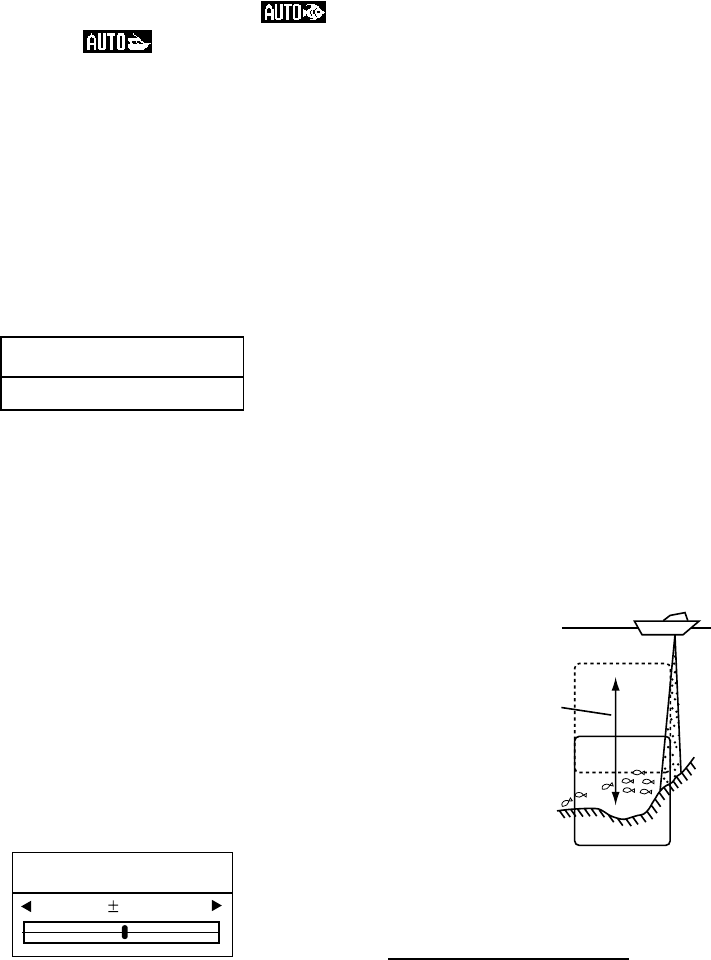
6
5. Press the [MENU/ESC] key to close the
menu.
The auto mode in use is shown as
(Auto-Fishing) or
(Auto-Cruising) at
the top left corner on the screen.
Range offset
To display the bottom tail in detail in the
automatic mode, offset the range as below.
1. Press the [+] or [-] key of the [RANGE]
key.
+0 ft
AUTO RANGE OFFSET
Auto range offset window
2. Press the [+] or [-] key of the [RANGE]
key again to choose offset desired
(range: -100 to +300 ft). Note that if the
range is changed the offset is returned
to “0”.
3. Press the [MENU/ESC] key to finish.
Gain offset
Gain offset lets your override automatic
gain adjustment.
1. Press the [GAIN] key.
Min Max
0
AUTO GAIN OFFSET
Auto gain offset window
2. Press ◄ or ► key to offset gain (setting
range –5 to +5). The gain selected is
shown at the top of the screen as
G (Gain) + (or -) XX (offset).
3. Press the [MENU/ESC] key to finish.
1.7 Manual Operation
Choosing the manual mode
1. Press the [MENU/ESC] key to open the
menu.
2. Press ▲ or ▼ to choose AUTO MODE
from page 1 of the menu.
3. Press ► to show the options window.
4. Choose Off with ▲.
5. Press the [MENU/ESC] key to close the
menu. “MANUAL” appears in reverse
video at the top left corner on the
screen.
Choosing range
The basic range and range shifting
functions used together give you the means
to choose the depth you can see on the
screen. The basic range can be thought of
as providing a “window” into the water
column and range shifting as moving the
“window” to the desired depth.
Display
Shift
Range and display shift concept
Choosing basic range
The basic range may be chosen with the
[RANGE] key from the eight ranges shown
in the table on the next page. (“P/B” in the
table means Passi/Braza.)


















